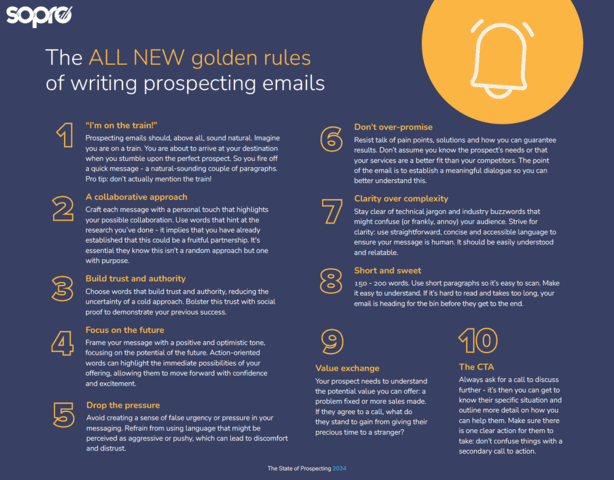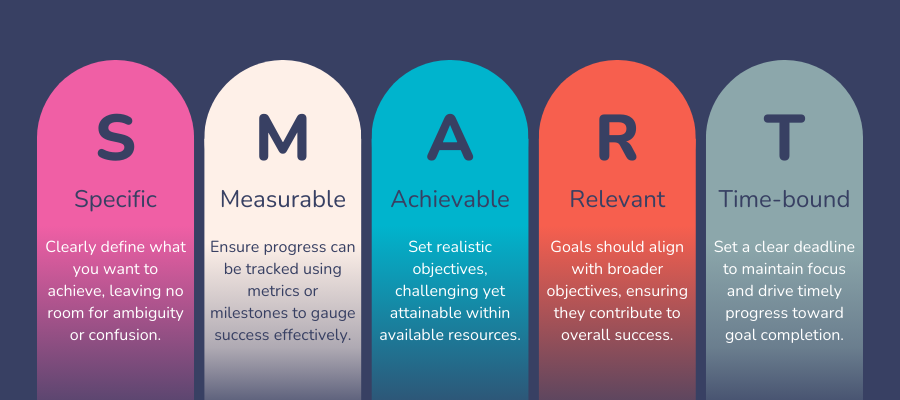B2B sales outreach: your foolproof guide

Unlock the secrets to successful B2B sales outreach with our comprehensive guide, packed with actionable strategies and expert tips to boost your lead generation.
Targeted B2B cold outreach allows businesses to directly reach out to potential clients, nurture that relationship, and drive sales.
A well-crafted outreach strategy enables you to reach out to your target audience, showcase your business and highlight your unique value proposition. Mastering B2B outreach is essential for sustainable business growth.
Inbound marketing and outbound sales are the twin engines of business growth; working together to enhance effectiveness for a comprehensive strategy. Overlooking this vital strategy means missing out on revenue-generation opportunities.
Keep reading for a step-by-step guide that will cover the basics, include key elements, and give you a framework to develop your own strateegy.
What is B2B sales outreach?
Let’s start from the top!
B2B outreach refers to businesses’ proactive efforts to engage and connect with other companies to generate leads, establish partnerships, and drive sales.
Sales outreach strategies should encompass multiple channels, such as email, phone calls, social media, and networking. The goal is to initiate meaningful interactions, build relationships, and foster mutually beneficial collaboration.
But don’t just dive into outreach headfirst. To see results, you’ll want to build your foolproof strategy.
Key components of your B2B outreach strategy
While they may differ from business to business, and industry to industry, your strategy might look a little like this:
- Define clear objectives
- Understand and get to know your target audience
- Develop your messaging
- Refine your follow-up strategy
- Integrate automation
- Measure and analyse your success
- Optimise your strategy
Each of these components plays a critical role in ensuring the effectiveness and success of the B2B outreach strategy. ????
Research phase: Know your audience
Identify your target market
Identifying your target market for a B2B outreach strategy involves systematically understanding the businesses most likely to benefit from your products or services.
Start by analysing your existing customer base. Identify common characteristics such as:
– Industry
– Company size
– Location
– Pain points
This data is a valuable starting point for defining your ideal customer profile (we’ll get to that later).
Next, conduct valuable market research such as:
– Industry trends
– Market dynamics
– Competitor positioning
Use industry reports, market surveys, and online databases to get a good idea of your business’s operating environment.
Once you have a clear picture of your target market, create detailed buyer personas representing your ideal customers.
A valuable next step is to test your research with a small sample of your target market. Analyse the response rates and feedback to refine your targeting criteria and optimise your B2B outreach strategy for maximum effectiveness.
Understanding buyer personas and ICPs
We’re not going to glaze over your buyer personas and ICPs. They’re fundamental elements of your strategy. Let’s dig a little deeper.
Buyer personas
A buyer persona is a generalised representation of your ideal customer. They are typically built around personal aspects and the challenges they face in their day-to-day business lives.
You’ll need to identify where they consume information that helps with their business needs—where you can reach them with targeted messaging. This offers further valuable insight into what their buying process might look like.
On average, there are 4.1 stakeholders in the B2B decision-making process, so you will have more than one persona influencing your sale. However, there will often be a key stakeholder you should consider first.
| Job title and role | Specific job titles and roles within the target company. |
| Professional background | Key experience, skills, and career highlights. |
| Day-to-day responsibilities | Core tasks and responsibilities in their role. |
| Challenges and pain points | Specific work-related problems and challenges they face. |
| Goals and objectives | Professional goals and objectives they aim to achieve. |
| Decision-making influence | Their role and influence in the buying process. |
| Preferred communication channels | How and where they prefer to receive information (e.g., email, LinkedIn). |
| Content preferences | Types of content (e.g., whitepapers, case studies) that resonate with them. |
| Budget authority | Their role in budget decisions and typical budget constraints. |
Ideal Customer Profiles
The sole purpose of ICPs is to provide a clear picture of the types of businesses your product or service can help with. They comprise a list of qualities a prospective company must have to be in your total addressable market. It is a prerequisite for them to convert and buy from you.
Most businesses typically identify several ICPs to capture the variety of customers who might benefit from their products or services, reflecting the different segments within their target audience. Each ICP represents a specific group with unique characteristics, challenges, and goals.
Doing this allows you to create sales and marketing messaging that resonates with each group, leading to better engagement and more sales.
Distinct customer profiles enable you to pinpoint your business’s specific challenges, ensuring your offerings resonate with potential customers and play a key role in guiding the evolution of your products and services.
| Company size | Number of employees, annual revenue. |
| Industry or sector | Specific industries the company operates in. |
| Geographic location | Where the company is based or operates. |
| Decision-maker characteristics | Job titles and roles of key decision-makers. |
| Pain points and challenges | Specific problems the company faces that you can solve. |
| Buying process | How they typically make purchasing decisions. |
| Budget | Typical budget range for relevant products/services. |
| Goals and objectives | Key business goals and objectives. |
What’s working for your competitors?
A competitive analysis involves evaluating your competitors’ strengths, weaknesses, strategies, and market positioning to inform your B2B sales outreach strategy.
Start by identifying your main competitors and gathering information about their products or services, target market, pricing, messaging, and outreach tactics. Analyse their online presence, including website content, social media activity, and customer reviews, to understand how they engage with potential clients.
Compare their offerings and messaging to yours, identifying areas where you can differentiate and add value. Additionally, assess their customer base and partnerships to identify potential leads or collaboration opportunities.
By understanding your competitors’ strategies and positioning within the market, you can refine your B2B sales outreach strategy to stand out and attract your target audience’s attention effectively. After all, 52% of businesses who make the most of data and insights like this have said it helps them to understand their audience better.
Crafting compelling messages
We’re ready to start building your initial message, which you will use to contact prospects. Good news – email is still one of the most effective ways of doing this.
Need convincing? According to our State of Prospecting report, 73% of buyers want to hear from you via email (more than any other channel).
Before we get into that further, let’s look at elevating your initial messaging to stand out from the competition.
The art of personalisation in B2B outreach
We can quickly see how outlining your buyer personas and ICPs is essential here.
Integrating personalised messaging into B2B outreach involves tailoring communications to address prospects’ needs, challenges, and interests. And it works—83% of buyers say an added level of personalisation enhances the buying experience.
You’ll have started this process by gathering relevant information about your target audience, such as their industry, job roles, pain points, and goals. Use this data to craft customised messages that resonate with each recipient, demonstrating an understanding of their unique situation and offering solutions that address their specific needs.
Personalised messaging goes far beyond including their first name or job title in any form of communication. It is crucial in B2B outreach because it helps build rapport, establish trust, and increase engagement with potential clients. By showing that you’ve taken the time to understand their challenges and offer relevant solutions, you demonstrate value and differentiate yourself from competitors who may be using generic, one-size-fits-all messaging.
Standing out from the competition is essential in a crowded marketplace where prospects are inundated with similar offers. Personalised messaging allows you to cut through the noise and capture the attention of your target audience, increasing the likelihood of conversion and long-term relationships. Not only that but by utilising the power of personalisation, B2B businesses have attributed it to a 1.4x growth in revenue!
Stick with us to determine which channels are the best for creating a personalised buying experience.
Writing effective cold emails
But before heading into all those great channels, let’s write the perfect email!
Trust us; we’ve been doing this for years. We’ve poured through 75.2 million emails, 22,120 multichannel prospecting campaigns and surveyed data from 377 senior B2B decision-makers and 82 top industries to help bring you the best insights.
Without further ado, we’ve assembled the essential golden rules for writing the perfect prospecting emails:

From subject line length, content, a clear call to action, main email content and personalisation, showing that you’ve done your research, you can easily communicate with prospects in a captivating way—a great backbone to your B2B sales outreach strategy.
But why stop there? Have you ever considered standing out by injecting a little humour into your emails and follow-ups? You know we tried and tested it!
Check out some of the knee-slapping examples below.

Choosing the right channels
Having a multi-channel strategy for B2B outreach is integral.
It allows you to reach prospects through various touchpoints, increasing the likelihood of engagement and conversion.
Secondly, different prospects prefer different communication channels, so offering various options ensures that you can connect with them how they prefer. Moreover, a multi-channel approach reinforces your message and brand presence, as prospects may encounter your outreach efforts through multiple channels, increasing brand recall and credibility.
Additionally, different channels have varying strengths and weaknesses, and by making the most of multiple channels, you can leverage the unique advantages of each. For example, while email may be effective for initial outreach, social media platforms like LinkedIn can facilitate ongoing engagement and relationship-building.
By diversifying your outreach efforts across multiple channels, you maximise your reach and effectiveness, ultimately driving better results for your B2B sales efforts.
But what channels can you make the most of? ????
Email outreach
With 347 billion emails sent daily in 2023, producing outstanding content is more important than ever. One of the most effective ways of doing this is through personalisation.
As we’ve already touched on, this goes beyond adding first name and job title. You’ll need to show that you’ve done your research, build rapport and highlight how you can effectively solve problems for the business you’re reaching out to. Be an active problem solver.
Another way to strengthen the success of B2B email outreach is to be present across multiple channels. Whether through display ads or direct mail, you increase your chances of bettering brand recall and trust.
Did you know that letters sent as part of a strategic multi-channel campaign make prospects 23% more likely to open an email?
“The barrier for sending emails is lower than ever, but the barrier for writing great emails is unchanged. The right message can help you stand out from the crowd. Never forget that behind your ICPs, targeting and data is a real person: so be natural and connect with them.”
Shayna Wu, Customer Success Team Lead
Drilling it down even further, 75% of B2B businesses say that prospecting results are better when email is combined with other outbound marketing channels.
Want to increase open rates and supercharge your email marketing efforts? We’re an email marketing agency with a proven record in creating content that appears in inboxes and appeals to prospects. Take a look at our email marketing for lead generation strategies for more insight and tips.
Want to get acquainted with the different channels that can be a positive asset to your B2B sales outreach? Let’s take a little look…
In the big bad world of B2B, connecting on LinkedIn is the obvious go-to, especially with over one billion users across 200 countries now on the platform. However, our latest report found that while social media is the second most popular way prospects want to be contacted, businesses reported that it performs poorly in driving leads.
So what’s the sticking point? Oversaturation and cold approaches! Think about it—how many InMails or connection requests do you get every week?
But that doesn’t mean you shouldn’t be doing it. Like email, LinkedIn needs to be used as part of a multi-channel strategy. That way, you’re fulfilling prospect preferences without wasting time and effort.
The lack of a prior relationship causes most LinkedIn outreach to fall at the first hurdle. But here at Sopro, we’ve got a solution for that!
We use buyer intent as a trigger to send InMail messages and connection requests. And it works—4.8% of the trigger events ended in a booked meeting. In addition, 55% of the InMail responses progressed into an active dialogue, where the client continued to nurture the lead.
LinkedIn is also a great space to position yourself as a thought leader in your industry. Whether you share valuable content and insights you have created or get involved with community conversations, it all goes a long way toward instilling a positive brand image.
Social media
Just because you operate within the realm of B2B, that doesn’t mean you can’t take up space on channels more commonly used for B2C outreach. After all, 66% of B2B marketers surveyed said they see a significant ROI from this practice.
You’re increasing brand visibility by integrating ad campaigns across LinkedIn, Facebook, Instagram, and Google Display into your B2B outreach strategy. So when you reach out via those more traditional channels, your prospects are more likely to know who you are, what you do and how your service can benefit them.
Here at Sopro, we use highly targeted ads to reduce wasted spending. We do this by combining our data with Clearbit. This helps you reach the decision-makers you need to target the most.
Fancy seeing a 211% increase in direct leads from your ads? Check out Audience AdSync. It might just be the ticket to optimising your B2B outreach.

Warm calling
We’re not saying that cold calling is dead. However, with less than 1% of calls leading to valuable conversations, there must be another way to elevate your B2B outreach.
Spoiler alert. There is!
By tracking buyer intent… hold on! We’ve mentioned this a few times now, But what is it?
Buyer intent helps you identify the probability of how close a prospect is to making a purchase. This can be tracked through web page visits, social media interactions and aspects such as downloading a free resource or signing up for a product or service trial.
Create a stronger sales pipeline with warm-calling – uncover intent and contact prospects when they are actively seeking solutions. By making the most of accurate data, you can start conversations with prospects at the right time and with the right information.
The results speak for themselves—8% of intent-based warm calls resulted in a booked sales meeting, making them a great arm of your B2B outreach strategy.
Direct mail
Letters? Surely not? It may be considered an old-school approach, but this is an effective way to remain top of mind.
Especially when it comes to fulfilling the rule of seven. An oldie but a goldie, the rule of seven states that a prospective customer must encounter a brand’s message at least seven times before purchasing.
So why not tie letters into your strategy?
Not only does it stand out as a physical message in a sea of digital communication, but it can also elevate your personalisation efforts. And its popularity is on the rise—the number of buyers in our survey who said they would be happy to hear about products or services through their letterbox doubled in just 12 months.
And for your brand recall, it works wonders. Only 44% of buyers can recall a brand after being exposed to digital advertising, but after receiving a physical letter, that number rose to 75%.
Bringing the old school back into the present has clear benefits when used as part of a multi-channel B2B outreach strategy.
IP match and engage
Take on the tech and optimise your B2B outreach strategy in style. Turn anonymous web traffic into named businesses with a nifty little plugin – you guessed it… it’s what we do here at Sopro, and we couldn’t recommend it enough.
With IP match, you can fill your sales pipeline with ready-to-buy leads from when buyers are doing their research.
From anonymous visitor ???? to a named company ???? uncover relevant decision-makers ???? engage with personalised messaging.
It is as easy as that. You can leverage the tech to identify the best decision-makers to target and send an initial message that will resonate with them based on their needs.
In our client campaigns that used the IP track and engage feature to optimise their B2B sales outreach, sales meetings booked increased by 15% and lead quality by 38%.
Learn all about intent data below and how it can help you to master B2B sales outreach. ????

Leverage B2B intent data
Offer the perfect solution at the right moment by discovering B2B buyer intent.
Get the guideOutsourcing
It’s safe to say that B2B sales outreach is no small task, especially since we see the benefits of harnessing a multi-channel approach.
If you’re a start-up or an SMB, this can be time-consuming. Perhaps you’re looking to take some of the load off by outsourcing a marketing team, maybe PR… or why not prospecting?
Whether or not you have an in-house sales team, Sopro can help deliver a steady flow of leads, freeing up your time to focus on those all-important long-term growth goals. And would you believe it? We’re big fans of multi-channel outreach and the benefits it can bring to your campaigns and brand image.
We’ll build a live audience of your ideal customers and contact them directly with on-brand messages across multiple touchpoints. Replies fly straight into your inbox.
Want to take the pressure off? We thought so. ????

Multi-channel prospecting
Sell more with proven multi-channel outreach, delivered by expert.
Work with usImplementing automation tools
Automation and AI in sales are already becoming established as key tools for reps. Businesses using automation tools as part of their outreach strategies are seeing a 15-20% increase in potential clients.
Automation and AI can effectively eliminate manual tasks and be a real benefit to productivity. It can help your teams focus on the overall business strategy, including B2B sales outreach.
Here are just a few tools that will help your teams focus on rolling out and optimising their sales outreach strategy:
Webchat
Make the most of AI to automate customer interactions, handle enquiries, qualify leads, and provide personalised support, enhancing engagement and freeing up sales representatives’ time.
With 96% of consumers expecting a response within 5 minutes, use live web chat tools to start the conversation quickly.
Scheduling
Automating scheduling limits a lot of back and forth between you and a potential client – this can go a long way in optimising a seamless buying journey and overall satisfaction. It’s useful for scheduling appointments such as demos and coordinating meetings. Take the hassle out of this task with an appointment setting agency, like Sopro.
Want to reduce no-shows? This might be a benefit to you. Self-scheduling has been shown to decrease no-shows by 17%. Worth adding to your outreach strategy, then!
Sales automation
A third of sales tasks can now be automated. This doesn’t mean salespeople will be out of a job anytime soon. It simply gives sales reps more time to focus on selling.
Just some of the tasks that sales automation can take the lead on include:
- Forecasting
- Lead identification
- Lead qualification
- Nurturing and follow-ups
- Pipeline management
- Reporting
While being performed by software, you can still include personalisation and your branding. You’ll often find automation features like these integrated into CRM or B2B lead generation software.
If you need more convincing, you simply don’t want to be left behind. With an uptake in software integration into our working lives, 60% of sales professionals say that AI and automation tools are integral to their sales strategy.
Sopro is an expert B2B account-based marketing agency, with experience across various sectors and industries. So, if you’re looking for an IT services and MSPs lead generation agency, professional training and coaching lead generation agency, or something else, book a demo and see how Sopro can help your business.
Nurturing leads and follow-up strategies
Lead nurturing focuses on building relationships with prospective clients and moving them through the sales funnel. To help convert prospects, you’ll need outreach that ultimately aims to build trust, educate, and provide value.
This is achieved through different avenues, such as sales and marketing outreach and content.
While it may be obvious by this point, the most successful B2B outreach strategies will also incorporate lead nurturing focused across multiple channels. In addition to integrating online and offline touchpoints, it’s important to vary your outreach and content depending on where the leads are in the funnel.
Awareness stage
Focus on educational and engaging content. Blogs and videos, for example, are great assets to harness.
Consideration stage
Here, interactions with your prospect must be solutions-focused, highlighting you understand the issue they may be looking to solve.
Elevate your B2B sales outreach with a personal touch that shows off your expertise and levels of thought leadership. This could involve sharing content such as whitepapers, subscriber emails, and case studies or inviting them along to webinars.
Decision stage
Don’t fall at the final hurdle. Give your leads access to free trials or a product demo. They can test the solution for themselves! It’s also pivotal to offer transparency, including access to a pricing page so that they can assess potential ROI – this will come in handy when dealing with multiple decision-makers. (A great example of that here ????)
Develop a follow-up schedule
Effective follow-up is crucial for nurturing relationships, staying engaged with prospects, and guiding them through the buying process.
By integrating a follow-up schedule into your strategy, you’ll ensure no opportunity falls through the cracks and maximise the chance of conversion. Consistent follow-up demonstrates reliability and commitment, building trust and credibility with potential clients.
Develop your follow-ups based on their position in the sales funnel and what content will likely appeal to them the most at that stage.
At a basic level, your follow-ups should be:
– Timely
– Personalised
– Relevant
– Address pain points
– Add value
Develop a cadence that pulls together those multi-channel touchpoints and integrate communication across email, phone calls and social media where appropriate.

B2B follow-up emails
Master your audience and nail your timing for better results.
Learn moreMeasuring success
Every strategy will develop over time as you learn what works and what doesn’t. Secondly, as industry trends and preferences change, you should always be looking to optimise your B2B outreach, whether that’s your emails or your approach to social media.
To gain valuable insights, you’ll need to track key metrics to make data-driven decisions.
When setting out which KPIs and metrics you want to track and strive for, be sure they’re SMART.

To check the effectiveness of your B2B outreach strategy, it’s vital to keep an eye on aspects such as lead rate, conversion rate, customer acquisition costs, pipeline velocity, customer lifetime value, and more. For even more detail on how you can effectively measure success check out our detailed guide on B2B sales metrics.
B2B outreach finesse
Mastering your B2B sales outreach strategy really begins with understanding your audience. From there, you can craft personalised messages, leverage multiple channels (a must), and implement automation tools that will go a long way in helping your team.
By following the outlined steps, including defining objectives, researching your target market, and nurturing leads effectively, sit back as you watch your outreach efforts make a real impact.
Throughout all of this, tracking key metrics such as lead generation, conversion, and ROI is essential. It will allow you to make data-driven decisions and continuously optimise your strategy for sustainable growth and success in highly competitive B2B industries.
Stay proactive, stay engaged, and watch your business thrive through effective B2B outreach. But remember, we’re here to help you sell more, so if you need a helping hand from the experts, find out what our prospecting service can do for you.
Looking for a lead generation agency for financial services companies? Or maybe you’re after a lead generation agency for training and coaching services. Look no further than Sopro. We’ll develop messaging that resonates with the decision-makers you need to sway.







Share